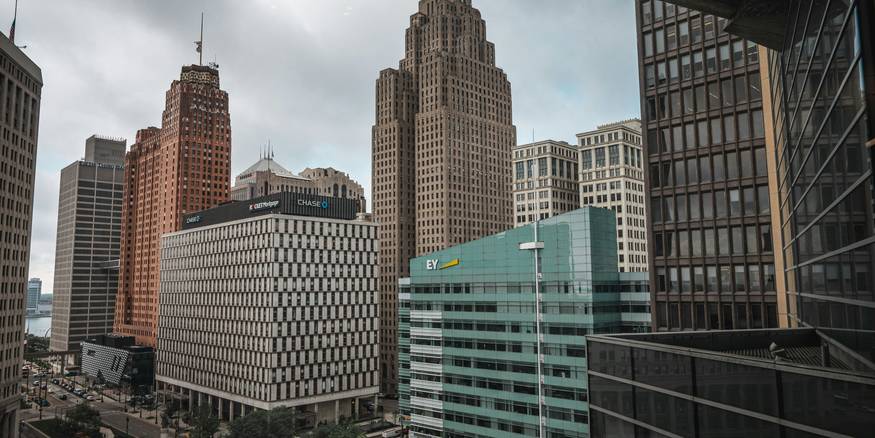Landlord Portal
Your one-stop compliance dashboard for Michigan rental law—from security-deposit timelines to entry-notice rules—designed for busy property owners who value low-risk, high-trust operations.

Your one-stop compliance dashboard for Michigan rental law—from security-deposit timelines to entry-notice rules—designed for busy property owners who value low-risk, high-trust operations.

Michigan’s landlord landscape is dominated by owners with fewer than 10 units. Juggling repairs, rent collection, and ever-evolving statutes can be overwhelming. This portal distills must-know compliance points—security deposits, notices, and entry rules—into easy reference tables and action templates so you can focus on running profitable, dispute-free rentals.
| Event | Deadline | Deliverable | Pro Tip |
|---|---|---|---|
| Receipt to Tenant | 14 days after funds received | Bank info & amount | Set auto-email rule in PM software |
| Move-In Inventory Checklist | At key delivery | Blank 2-page checklist | Require e-signature for paperless docs |
| Itemized Deductions / Refund | 30 days after surrender | Certified mail list + balance | Attach before/after photos |
| Tenant Objection Window | 7 days after list receipt | Tenant written dispute | Respond in writing to avoid small claims |
Michigan law requires “reasonable” notice—commonly interpreted as 24 hours—for most non-emergency access. Emergencies like burst pipes waive notice but still demand post-entry documentation. Always specify a 2-hour arrival window and log confirmation attempts.
| Reason for Entry | Minimum Notice | Allowed Hours | Citation | Best Practice |
|---|---|---|---|---|
| Scheduled Repairs | 24 hrs | 8 a.m.–8 p.m. | MCL 554.139 | Email + text reminder |
| Showings to Prospects | 24 hrs | 9 a.m.–7 p.m. | Customary law | Offer virtual tour first |
| Government Inspection | 48 hrs | Business hours | City code | Post notice on door |
| Emergency (fire, leak) | None | Any time | MCL 600.2918 | Call tenant ASAP |
Document every notice attempt to shield against “illegal entry” claims—learn more in our privacy guide.
Consistent, written communication minimizes misunderstandings and strengthens your legal footing. Access editable DOCX versions inside our Sample Letters tool.
Under MCL 600.5720, actions taken within 90 days of a tenant’s protected activity—such as reporting code violations or requesting repairs—are presumed retaliatory. Penalties include dismissal of eviction and potential damages.
If your rental was built before 1978, federal law requires you to provide every incoming tenant with an EPA-approved pamphlet on lead hazards and a signed disclosure form. Michigan courts treat non-compliance as a material breach, meaning tenants can rescind the lease or sue for triple damages if a child tests positive for elevated blood-lead levels. The regulation applies even when you believe all peeling paint was remediated years ago. It also covers detached garages, sheds, and common hallways—any pre-1978 structure on the parcel counts.
The safest workflow is to email tenants the PDF pamphlet and attach the disclosure form with e-signature fields during the application phase. Many landlords wait until lease signing, but early delivery documents your diligence and weeds out applicants who may knowingly hide unsafe renovation projects. Keep the executed form for at least three years; auditors often request it long after tenants have moved out. Store it in a “Compliance” folder with inventory checklists and smoke-alarm certifications for quick retrieval.
Disclosures aren’t just paperwork—they create a defense shield. In Michigan negligence suits, landlords lose more than 70 % of lead cases because they lack a signed form. Spending five minutes up-front can save five-figure settlements later. Finally, remember that repainting alone does not equal abatement; you must follow EPA’s RRP rules when disturbing more than six square feet of paint per room. Hire certified contractors and keep their clearance reports on file.
Proactive maintenance keeps tenants happy and minimizes emergency calls that wreck your weekend. A written calendar also proves “ordinary diligence” if a habitability claim lands in district court. Below is a sample four-season checklist that small landlords can integrate into Google Calendar or property-management software. Feel free to tailor tasks to local climate, heating system, and building age.
Each task should be logged with date, vendor, cost, and follow-up note. Email a summary to tenants so they see the effort you put into asset preservation; transparency discourages frivolous repair-and-deduct attempts. For multi-unit buildings, post a seasonal checklist on the bulletin board and invite residents to add suggestions. Crowdsourced tips often reveal hidden issues long before they escalate into violations.
Smart record keeping transforms everyday expenses into lawful deductions on Schedule E. The IRS lets you write off mortgage interest, property taxes, insurance premiums, utilities paid on behalf of tenants, routine maintenance, travel to and from the property, and depreciation. Michigan imposes no special add-backs on residential rentals, so the federal ledger usually mirrors state returns.
Set up a dedicated business checking account to avoid co-mingling and make audits painless. Use accounting software—or a free spreadsheet—to categorize income and expenses monthly. Scan receipts the day they hit your pocket and label files “YYYY-MM-DD_vendor_amount.pdf” so they alphabetize chronologically. Cloud drives like Google Drive or Dropbox provide redundant backups; a lost shoebox of receipts can cost you thousands.
Don’t forget mileage: at 62.5 ¢ per mile (2025 rate), even four round-trips per month adds up. For capital improvements—new roof or HVAC—store contractor invoices separately; you’ll depreciate them over 27.5 years rather than expense them outright. Finally, archive documents for at least seven years; the IRS has six years to challenge returns when under-reporting exceeds 25%. With digital folders, long retention no longer clutters the filing cabinet.
Information provided is general; consult an attorney for legal advice.